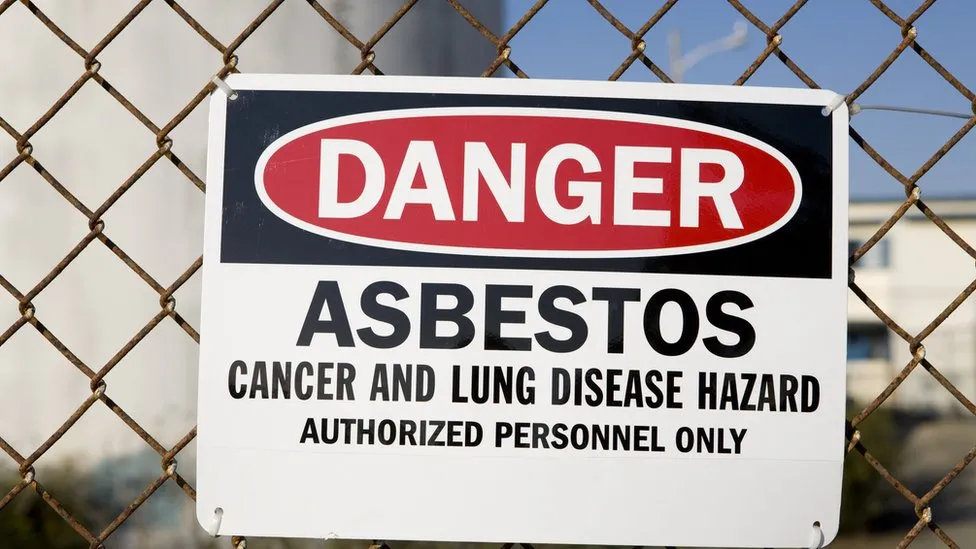The United States has recently Declared a Ban on Asbestos

The United States has recently declared a ban on asbestos
The United States has recently declared a ban on asbestos – The United States has recently made headlines by announcing a ban on the sole remaining form of asbestos still in use or imported into the country, marking a significant step in public health regulation.
This move comes decades after the majority of developed nations initiated the phase-out of this cancer-causing material.
The decision by the Environmental Protection Agency (EPA) to implement the ban is notable, especially considering its previous failure to do so over three decades ago. Asbestos, a well-known carcinogen, has already been prohibited in more than 50 countries worldwide.
The ban addresses a pressing issue, as asbestos exposure is directly linked to approximately 40,000 deaths annually in the United States, attributed to lung cancer, mesothelioma, and other related cancers. Despite a gradual decline in its usage over the years, asbestos remains prevalent in numerous homes and buildings across the nation, posing ongoing risks to public health.
The news of the ban elicited emotional responses from advocates like Linda Reinstein, who has been tirelessly campaigning against asbestos for the past two decades following the tragic death of her husband due to repeated exposure to the substance. Mrs. Reinstein revealed that she broke down in tears upon hearing about the ban, underscoring the profound impact it carries for those affected by asbestos-related diseases.
For many years, the United States has faced criticism for its delayed action on asbestos regulation, earning it a reputation as “the poster child for not doing the right thing” in this regard. Mrs. Reinstein pointed out that even the United Kingdom implemented a ban on asbestos a quarter of a century ago, emphasizing the disparity in governmental response to this health hazard.
Despite this progress, Mrs. Reinstein cautioned that the US ban remains more limited compared to the comprehensive anti-asbestos measures adopted by other nations.
She highlighted the fact that the United States stands as the only Western industrialized country yet to enact a complete ban on asbestos, suggesting that there is still work to be done in ensuring public safety and preventing further harm from asbestos exposure.
EPA Administrator Michael Regan made a significant announcement on Monday regarding the ban on asbestos, specifically targeting chrysotile asbestos, commonly known as “white asbestos,” the sole type permitted for importation and use in the United States. The decision mandates industries still utilizing white asbestos to phase it out within a maximum timeframe of 12 years.
White asbestos possesses fire-resistant properties, rendering it a material of choice for certain industries in the US, particularly in the manufacturing of vehicle brakes and chlorine production by chemical companies, crucial for water purification processes. However, despite this ban, it’s crucial to note that several other varieties of asbestos remain untouched by Monday’s regulatory action.
According to Brenda Buck, a renowned expert in medical geology at the University of Nevada, the EPA’s recent move represents merely a small stride toward eliminating asbestos from the country.
Buck underscores that while white asbestos is considered relatively less hazardous compared to other types, the absence of a comprehensive ban raises concerns about the potential shift toward the usage of these unregulated asbestos varieties by industries.
The campaign against asbestos gained momentum in the 1980s, particularly as concerns over health risks prompted schools across the US to initiate asbestos removal from their premises. In 1989, the EPA took a decisive step by attempting to implement a nationwide ban on asbestos, prompted by conclusive evidence of its harmful effects.
However, the ban faced a setback two years later when a federal court overturned it, citing the EPA’s failure to identify the “least burdensome alternative” for asbestos-reliant industries, as mandated by the Toxic Substances Control Act (TSCA).
In a pivotal move, Congress reformed the TSCA in 2016, eliminating the “least burdensome” requirement, thereby clearing the path for the EPA to revisit the ban on asbestos, culminating in the recent announcement.
However, progress on the asbestos ban stagnated following the inauguration of President Donald Trump in 2017, as his administration assumed oversight of the EPA, leading to a hiatus in regulatory efforts.















